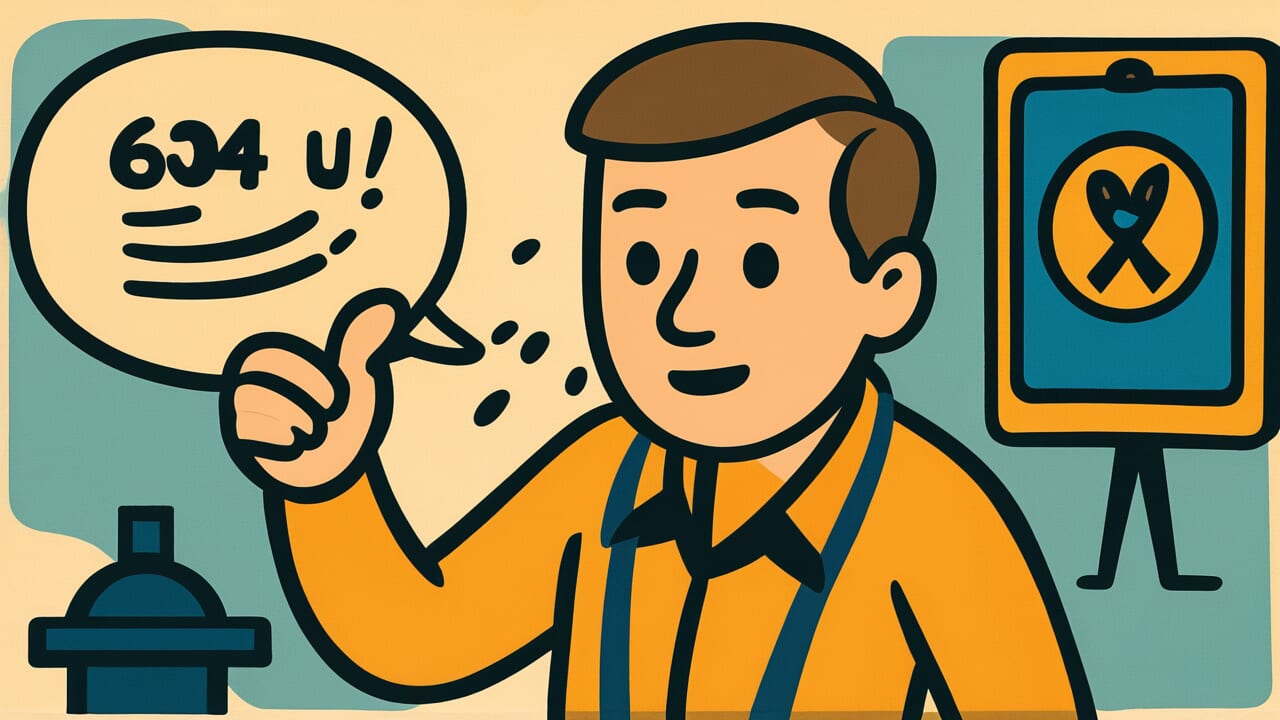How to Read “Good at admiring, poor at doing”
Kanshin jōzu no okonai heta
Meaning of “Good at admiring, poor at doing”
“Good at admiring, poor at doing” describes people who are skilled at praising others but never follow through with their own actions.
They say impressive things and easily find good points to compliment in others. But when it comes to doing the same things themselves, they completely fail.
This proverb criticizes this contradictory attitude.
This saying applies to people with a critic’s mindset. It describes those who love talking about ideals but never practice them.
Typical examples include people who share wonderful opinions in meetings but never take action themselves. Or those who praise others’ efforts while making no effort of their own.
Even today, you might see people on social media who are great at leaving heartfelt comments on others’ posts but never do anything themselves.
This proverb teaches us the importance of matching our words with our actions. It’s a timeless lesson that remains relevant today.
Origin and Etymology
No clear written records document the origin of this proverb. However, we can make interesting observations from how the phrase is constructed.
The word “kanshin” means being moved by others’ words or actions and praising them. Meanwhile, “okonai” refers to one’s own actual behavior.
This contrasting structure is the heart of the proverb.
The saying likely emerged during the Edo period as a warning against people who talked well but failed to act.
In the merchant society of that time, trust was everything. Merchants who praised others’ businesses but neglected their own shops would lose credibility.
As Confucian learning spread, the proverb may also have criticized people who were good at discussing scholarship and morality but couldn’t practice them in daily life.
It pointed out attitudes opposite to the ideal of “unity of knowledge and action.” The saying probably spread among common people with this meaning.
The structure places “jōzu” (skillful) and “heta” (poor) side by side. This sharp contrast emphasizes the huge gap between the two.
This vivid comparison made the proverb memorable. It’s one reason why people have passed it down through generations.
Usage Examples
- He always praises others’ ideas but never proposes anything himself—truly good at admiring, poor at doing
- To avoid being good at admiring, poor at doing, I practice things myself before praising others
Universal Wisdom
The proverb “Good at admiring, poor at doing” sharply points out a fundamental human weakness.
Why are people skilled at praising others but unable to do things themselves?
The answer lies in how comfortable it feels to be the evaluator. When we praise others’ actions, we’re watching from a safe place.
There’s no risk of failure and no need for effort. Yet we still feel good about ourselves for saying nice things.
This comfort keeps people stuck in the “critic” position.
Actually taking action requires courage. We might fail, look foolish, or not succeed as we hoped.
These anxieties stop us. As long as we stay on the praising side, we never have to experience such pain.
This proverb has been passed down for hundreds of years because this human trait never changes across time.
Between talking about ideals and actually practicing them, there’s always been a deep valley. Our ancestors knew how difficult it was to cross that valley.
That’s why they kept warning against people who were all talk. They continued teaching the importance of matching words with actions.
Everyone has the temptation to become a critic. This proverb is an eternal call to resist that temptation and be a person of action.
When AI Hears This
The human brain processes “understanding” and “doing” in completely different locations.
For example, when evaluating piano performance, the prefrontal cortex at the front of the brain becomes very active. This area handles verbal explanation and judgment of quality.
But when actually playing piano, the cerebellum and basal ganglia deep in the brain activate. In other words, critics and performers literally use different parts of their brains.
Even more interesting is the huge difference between knowledge acquisition speed and skill acquisition speed.
Cognitive psychology research shows that understanding what makes good performance takes hours to days. But actually being able to perform that well requires thousands of hours of repeated practice.
That’s a 100 to 1000 times difference. Knowledge enters the brain with one explanation, but skills require physical changes to neural circuits themselves, taking vastly more time.
This time gap is the structural cause of being “good at admiring, poor at doing.”
People can develop critical judgment quickly, so they feel like they can do it too. But actual skill acquisition requires something completely different—much more time.
From a neuroscience perspective, having many critics and few practitioners is, in a sense, an inevitable phenomenon.
Lessons for Today
This proverb teaches modern people the value of becoming practitioners rather than evaluators.
In today’s information-flooded society, anyone can easily become a critic. Liking posts on social media, leaving comments, and expressing opinions takes just seconds.
But what truly changes your life is the action that comes next.
If you praise someone’s effort, try making the same effort yourself. If you think an idea is wonderful, try practicing it in your own way.
That one step makes you grow.
The important thing is not aiming for perfection. You don’t need to do it as well as when you praise others.
Even if you’re clumsy or fail, only people who take action gain certain experiences and growth.
Why not start today? When you praise someone, take one action yourself that same day.
Small things are enough. That accumulation builds a trustworthy person whose words and actions match.
You have that power.



Comments